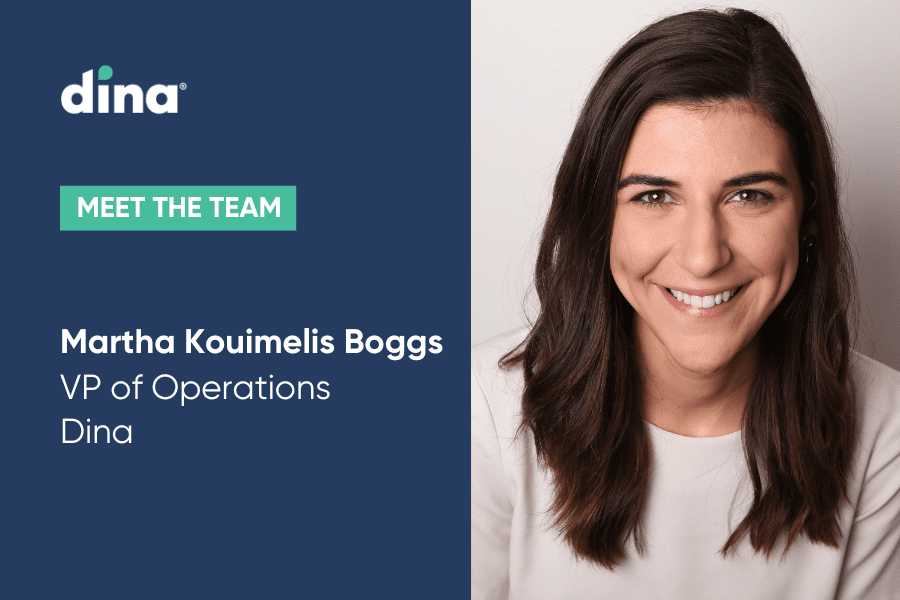
Non-medical supplemental benefits like personal care, meal delivery and home modifications have become important to health plans as a way to meet member’s needs and differentiate themselves from Medicare and their competitors. But they often struggle to operationalize and scale these types of services.
At issue: finding high-quality partners that can deliver timely support, and creating transparency around the services delivered.
Dina’s operations team works side-by-side with our customers to solve these problems.
“Our goal is to make sure you have a high-quality provider network that is as engaged and responsive as they can possibly be, so that members and patients get access to the services they need as quickly as possible,” said Martha Kouimelis Boggs, Dina’s vice president of operations. Here’s what else she had to say:
Talk us through the Dina implementation process.
Our implementations are designed to be like our product: easy, simple, quick. We break the process into four phases. First, we identify the use case – how extensive of a network are we bringing online and what systems are we integrating with – and allocate resources on both ends. Next, we draft a charter to guide us as we move through the implementation. Then, we organize the provider network to ensure adequacy, and document workflows. We review the current state and then what the process will look like with Dina. Finally, we gather baseline data so we can measure the value we bring to the table once we go live.
What does training look like?
Our training is really quick because it is such a simple process and the platform is really intuitive. When people first see it, they just get it. So it’s an hour or two and then they’re off to the races. We also run a train-the-trainer model to make sure that we are training up users on administrative functions so that they can really own the platform.
The platform is really intuitive. When people first see it, they just get it. So it’s an hour or two and then they’re off to the races.
How is usage tracked and measured?
We have two types of reporting. There’s utilization reporting, which is really informative to see how clients are engaging with the platform, how many services they’ve coordinated, how many patients or members they’ve touched, and how many end users are logging in every day.
Then, we’re able to capture all of this information about the way the provider network engages with the plan. How quickly do they respond? How often do they decline in particular geographies? Our goal is that almost all service requests are confirmed within an hour. This is information that typically is just unknown today. And so being able to surface that in a useful way is exciting.
How does this help organizations comply with emerging regulations?
I think the ability to get as granular as understanding where the member is receiving services, or which agency the member is receiving services from, and then providing that back in our reporting is something that is a blind spot today for many plans. There’s a lot we can extract from our data that will help support compliance.
What’s the value of operating a lean team?
Because we’re a customer-dedicated and collaborative team, we can operate very quickly. There’s better coordination and there’s better communication. Everyone gets to be involved at every point of interaction with the customer, so we really do get to build long-term relationships and become experts. We know the workflows of each client, so we’re able to help in a way that goes above and beyond a typical support team. We’re very interconnected so you don’t feel like you’re being handed off to a siloed team post-implementation.
What’s next for Dina?
We’re constantly surfacing new and unique data that helps us get ahead of network adequacy issues and supports our management of the most engaged provider ecosystem around. We’re excited to dig deeper into ways to drive even more value for our clients in the areas of compliance and network management. So I’m really looking forward to seeing how our solutions evolve to continue to support the work that our customers and end users do.
PACE Members Expect Quick Activation of Home-Based Services.
Does Your Plan Deliver?
See how easy it is to streamline access to medical and non-medical
home-centered benefits, support your centers, and quickly measure results.




